Growing Original Ideas in a Digital Garden
When I first heard the phrase ‘digital garden’ in August 2020, I imagined a beautiful webpage with carefully cultivated, animated flowers. How wrong I was. Digital gardening, also known as ‘evergreen note-taking’, is more creative, more cognitive and far less high-tech. A digital garden is somewhere to cultivate original ideas and, if you choose, share them with the world.

The origins of the term ‘digital garden’ go back to a dizzyingly nostalgic time of open code and hypertext. Back in 1998, when minimalist web design was considered a waste of potential, Mark Bernstein wrote an explorative HTML essay on “Hypertext Gardens”. Now the Chief Scientist of Eastgate Systems, Bernstein contrasts the metaphorical ‘corporate office’ of ‘rigid hypertext’ with the ‘wilderness of unplanned content’. He argues for a synthesis of these two web design styles, combining ‘regularity and irregularity’ in to create enjoyable, unique websites that focus on exploration rather than navigation. While it’s important to help customers find your products easily, a digital garden can help you generate and develop more creative, original ideas and create content at once.
What Is a Digital Garden?
Bernstein’s early idea has grown, developed and emerged in 2020 as the ‘digital garden’. A great definition comes from the neurologist, founder of Ness Labs and digital garden evangelist, Anne-Laure Le Cunff, who describes the phenomenon as ‘an online space at the intersection of a notebook and a blog, where digital gardeners share seeds of thoughts to be cultivated in public.’
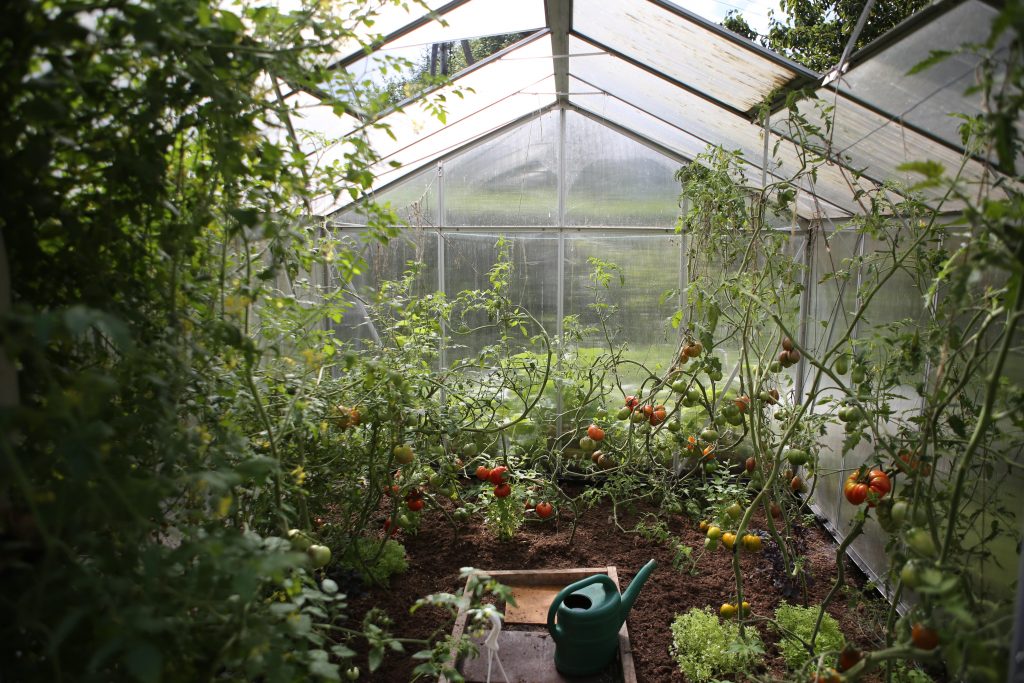
It may seem messy, but a digital garden is a site where ideas grow through juxtaposition. With a standard blog, many of us publish posts and walk away. We might come back later and tidy things up, or add new information when it serves our SEO purposes, but otherwise, a published article is a finished piece. When nobody comes back to it, a blog loses its initial value with every week that passes.
Digital gardens are not organised chronologically, but using lots of internal links to connect notes by subject. This creates a trail of ideas, a digital mind-map that reflects your style of thinking. It’s like making every post a cornerstone article, and at the same time asking readers to read each post in the context of other related pieces.

You can come back to your thoughts time and time again. As you learn or think more on a subject, you add to your posts and trim away what no longer makes sense. You link your posts together to create a network of original ideas. Just like plants in a garden, your content becomes stronger through constant nurturing.
Why is Digital Gardening so Exciting?
Since hearing the term, I’ve been hooked on finding out everything I can about digital gardening. The practice has vocal and productive advocates, with some building their own evergreen platforms to highlight the potential applications of this densely linked web structure. There’s even a Telegram group for digital gardeners to share and discuss their practice.
Writing and typing are organic tools for complex cognitive thought. This simply means that ideas you can’t work on fully in your head can be fleshed out through writing. As we write, we can let go of the original thought and work on whatever stems from it with more focus, thinking through each stage of the idea’s development.

Advocates of digital gardening argue that the format, also called Evergreen Notes, takes this organic tool to the next level. Writing each increment of a train of thought into a note of its own gives us room to revisit, edit and branch out.
One note builds on another, pushing each section of thought beyond its initial seed. What you have at the end is a whole network of articles and notes which can be read in any order, building on each other to communicate a robust argument.
Researcher and developer, Andy Matuschak suggests taking less than half an hour each day to make and publish a note. With digital gardening, those of us who are time-poor in our work and home lives can use a network of short-form notes to access deep thinking and accumulate insights more easily.
Examples of Digital Gardens to Explore
For neuroscience and digital gardening: Mental Nodes by Anne-Laure Le Cunff – Index • Mental Nodes
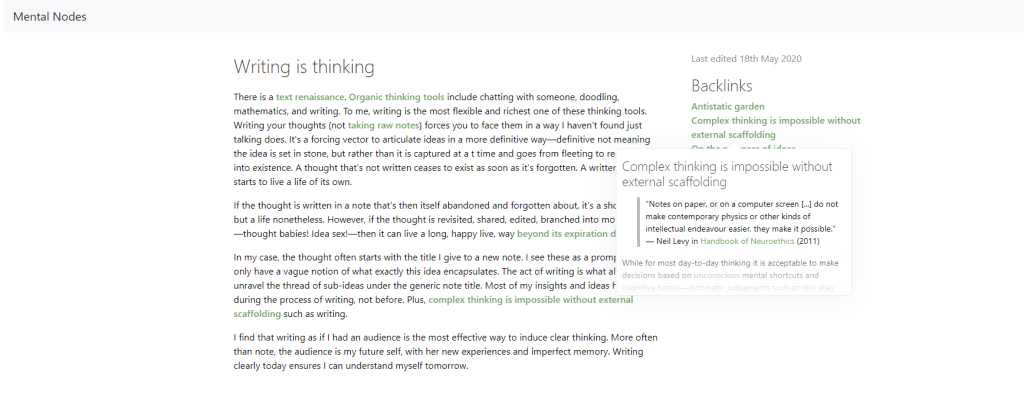
Explore a gorgeous nested notes platform: Notes by Andy Matuschak – About these notes

See tech illustration and an example of sharing digital gardens on a professional website: Maggie Appleton’s Digital Garden – https://maggieappleton.com/

Find ‘experiments in hypertext thinking’ in Tom Critchlow’s Wikifolders – Tom Critchlow. Move. Think. Create.
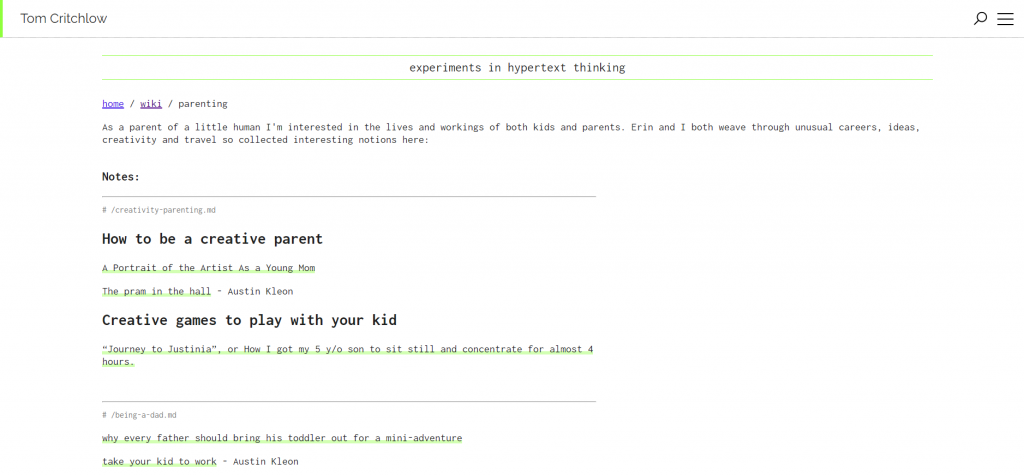
Why Start a Digital Garden?
For me, it might be a nostalgia for a simpler internet, or at least less rigid and navigable. With links between notes, digital gardens organise content as a network rather than a list. This creates organic reading, rather than goal-oriented searching. It’s not driven by SEO. It’s content creation for the sheer joy of it.
Creative Freedom
There is no single digital gardening platform. Many gardeners code their platform from scratch. If you want to build a no-code digital garden, the simplest way is to use advanced note-taking apps such as Notion, or create databases with Roam Research or TiddlyWiki. You might want to create your own domain that links to these published pages, but that’s not necessary. You can use any platform that uses bilateral links (links that go both ways) to create your own space for taking notes in this way. The lack of standard formatting means digital gardens are yours to create.
Think Things Through
Most of the top digital gardens are written by developers, academics and creatives: people thinking about thinking. They believe in the process because they are seeing results. They understand that writing and linking together those random shower thoughts lead to deep learning. We are forced to think them through fully when we write, and this is even more true when we consciously learn in public.
Learning in public is both a creative challenge and a winning social media strategy. It’s what Andy Matuschak refers to as working ‘with the garage door up‘. Anyone walking by can see: someone is working. It’s sharing a screenshot of your digital work or a picture of your latest sketch on social media. TikTok videos of pottery workshops are a clear example.
These ‘work in progress’ posts are so successful because online marketing requires you to always have something to say. If you stop talking, you disappear, but nobody can share success stories and final products all the time. Unless you make a page saying ‘watch this space’, there is no space to watch, because something else fills it.

For thought-leadership, academic and scientific industries, the product isn’t always physical or digital. How do you show others what you are doing when you can’t post a screenshot of your thought process?
Learning in public is, essentially, making your original thinking visible. When your industry is mostly cerebral, showing your work means writing it down and putting it in context. Digital gardens can achieve this in a way that is easy to share and low pressure.
Balance Media Consumption with Content Creation
When we only read articles, watch TV or listen to the radio, we forget to create. We trick ourselves into feeling there is too much out there already, that we’ve nothing to contribute, that we’ll never be that good. When creating content is your career, the looming spectre of content saturation is a constant challenge. This can lock creators into a cycle of one-upping high-performance articles with more and more outlandish techniques.
Combatting these fears means creating as much as you consume. This is both a good mental health practice and good content marketing practice. By keeping this balance, we combat lethargy and challenge ourselves to create new ideas.
Cultivating a corner of the internet just for your thoughts is a simple way to build something that grows. It’s easy to see how your work has an impact when you can watch your own progress this way. Sharing your notes helps you acknowledge and take ownership of that impact and celebrate yourself as a creator.
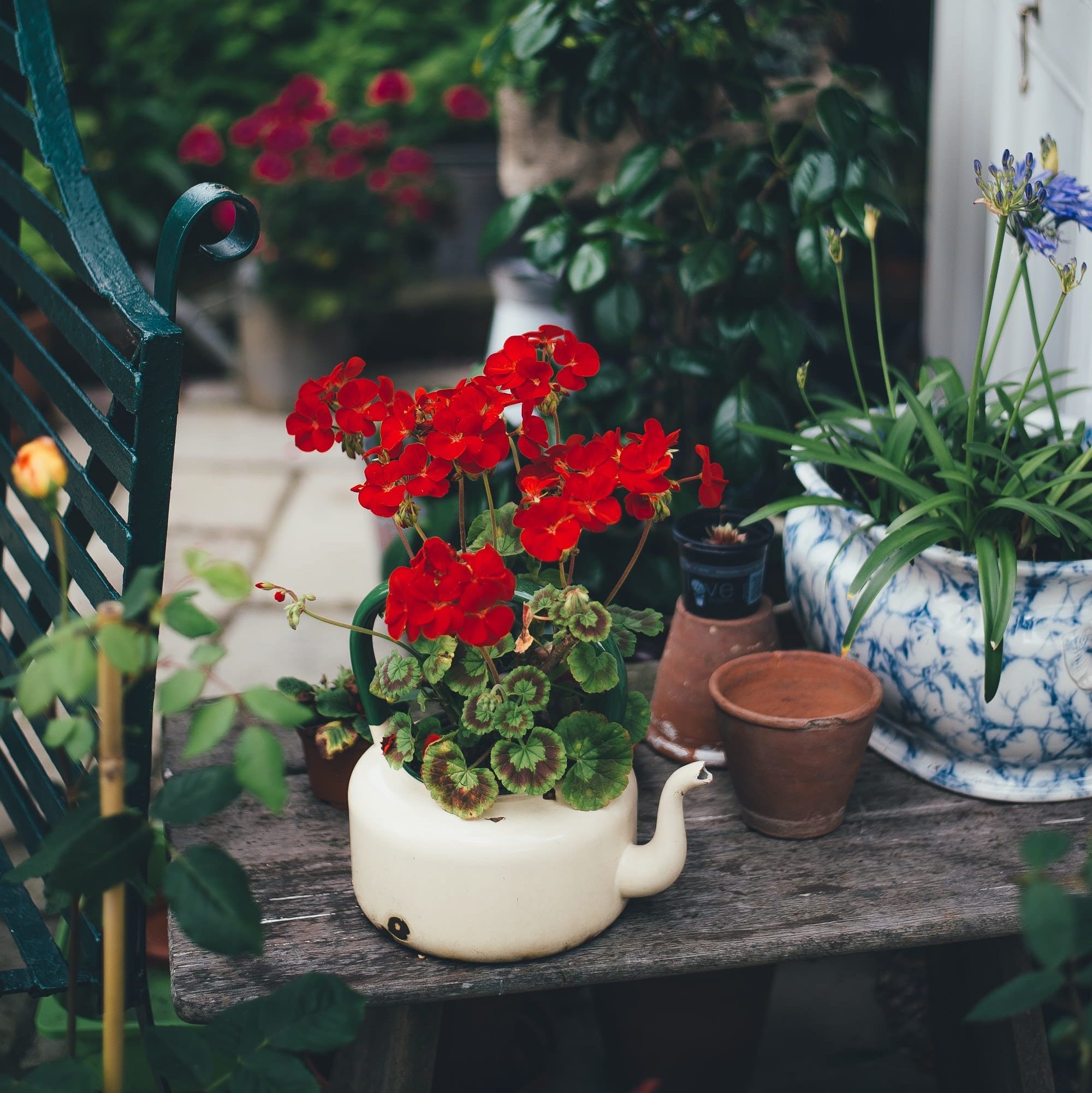
Can Content Marketers Grow Original Ideas with Digital Gardens?
I said earlier that digital gardening is not driven by SEO. But content strategy is dependent on keyword volume and target audiences. Why on Earth do I care about digital gardens?
Generate Original Ideas
Digital gardening builds space for creative flow online, accessible from anywhere. Anyone can take notes, keep lists of ideas or create a bank of resources with links. This is an idea that takes your notes to their full potential.
Writing what you’ve learnt in your own words is a much more useful process than simply copying key concepts. By rephrasing things, you can be sure of what you’ve understood, and identify gaps in your knowledge.
Digital gardening requires writing on your own ideas little and often. You keep coming back to them, filling in the gaps. You take them another step further and look after them. It’s vulnerable but it’s really worth it.
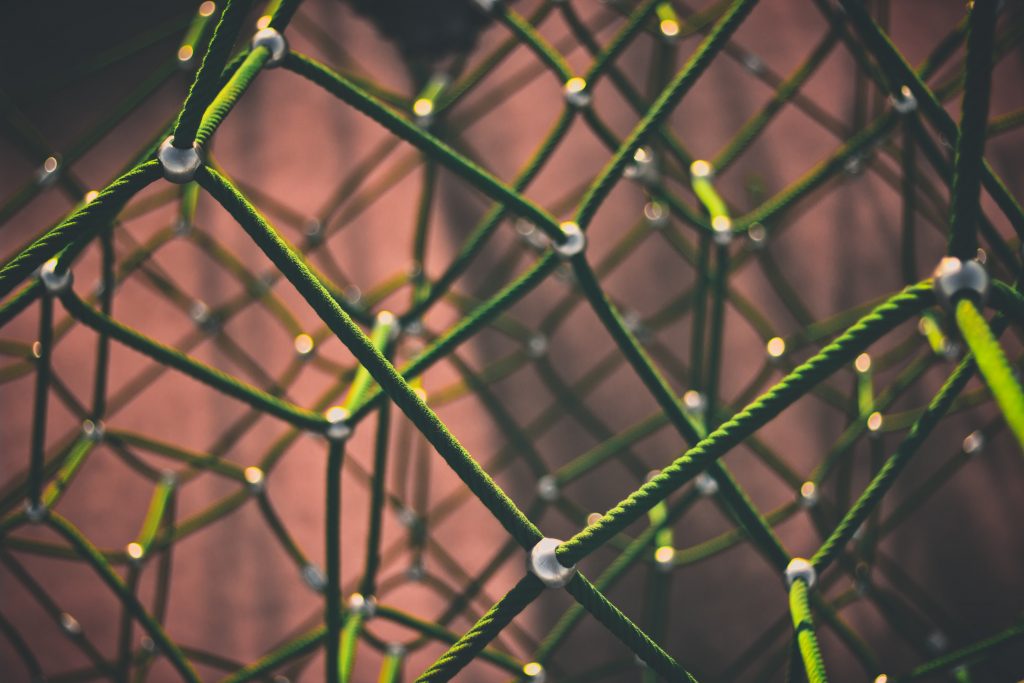
Once ideas have incubated in the digital garden, they can bear the fruits of fully-fledged articles. Having a nurturing approach to ideas means producing articles that are well researched and packed with truly original content.
Cultivate an Audience
Where notes relate to my industry, I can link to them within my traditional content. Readers who find answers within your business articles can dive deeper into your thinking by exploring the digital garden. They can learn about your product, how it’s developing, how you are adapting to new knowledge – they become invested.
By giving your core customers access to your online thinking, your brand becomes more human. You foster a human connection with every link, building brand trust and creating advocates for your brand. You might even create an online community.
Create a Resource
By sharing thoughts as you develop them, you create a dynamic learning resource. Your garden doesn’t just benefit your cognitive processes: it enables your readers to learn with you. Each time you update a thought, your readers see a little further into your thinking.
You could also develop your digital garden into a link library for your industry. For example, this page is full of links to other articles on digital gardens. By creating a robust collection of relevant links, you become the go-to for trusted resources.
Learning to Grow More Original Ideas
A digital garden makes your original ideas go further. By creating notes about your thinking and theorising and contextualising them against each other, you build up an engaged, constantly growing ecosystem of thoughts. You can map which subjects are stimulating your creativity the most, as most of the notes will be on that topic. You can collate and organise your daily writing practice, building space for creative flow into your digital realm and giving meaning to your shower thoughts. Best of all, you can show your work even when you’ve nothing physical to show for it.
At Ingeniums, we’re always looking to innovate our content marketing offering. Digital gardens might not work for everyone, but they are the beginning of a new way of looking at how we structure content. Central blog pages mean that readers are ready to leave when they finish a blog. With a networked structure of articles, built on internal links, readers are more likely to explore other posts in the same vein, because they are right there. By using a looser, more organic structure to present articles, content marketing could become engaging and creative again.